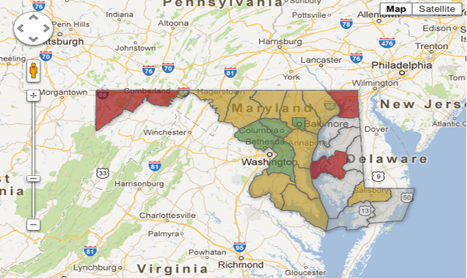ANNAPOLIS – People who live in areas with higher rates of gun ownership are more likely to commit suicide, whether by gun or by some other means, say researchers who study the effects of firearms on society.
The correlation between gun ownership and suicide rates takes on added significance given the increase in firearms sales in the wake of tragedies like the mass shooting at Sandy Hook Elementary in Connecticut. This week, a University of Maryland graduate student who suffered from mental illness, shot two of his roommates with a legally purchased 9 mm handgun, killing one before turning the gun on himself.
“Firearms suicides tend to be very compulsive acts,” said Professor Daniel Webster, director of the Johns Hopkins Center for Gun Policy and Research. The compulsive nature of the act could be one of the factors in explaining why areas with more firearms have higher suicide rates.
Webster recently testified in support of one of Gov. Martin O’Malley’s proposed gun control bills.
There appears to be consensus amongst most researchers that there is a direct correlation between gun ownership and suicide rates.
But, “correlations do not necessarily indicate causality,” said Matthew Daley, vice president of Government Affairs for the Maryland State Rifle and Pistol Association.
Guns are the No. 1 way people kill themselves in the U.S. The lethality of firearms, which are far more effective than alternative suicide methods like hanging or overdose, combined with the sudden, overwhelming impulse to do self-harm creates a deadly mix, experts say.
“(A gun) is immediate. It’s easy, it’s right there,” said Linda Hofmann, director of Behavioral Health Services at Frederick Memorial Healthcare System. “It doesn’t require planning if they have a firearm in the house.”
Hofmann said that when someone is suicidal and has a known history of gun ownership, the behavioral health service works with the family to keep them far away from guns.
President Barack Obama and O’Malley are among a number of politicians around the country who have proposed new gun control legislation to reduce access to firearms.
“Certain individuals may find suicide with a gun more appealing than alternative methods – perhaps because of speed, the high probability of success, or because it is a culturally accepted method – and thus only attempt suicide when a gun is available,” said a 2002 study conducted by Mark Duggan, a professor of health care management and public policy at the Wharton School at the University of Pennsylvania.
And it isn’t just households with guns that are more at risk for suicide, all of their neighbors have a higher likelihood of taking their own lives as well, studies say.
Duggan’s study suggests that people without easy access to guns don’t simply find another method to commit suicide, or may not be as successful. Without guns around, suicide rates go down.
Restricting access to firearms, especially by the mentally ill, can “significantly reduce suicides,” said Webster, of Johns Hopkins.
In 2006, the Israeli Defense Forces, in response to an increase in suicides, restricted troops from bringing home service weapons on the weekends. By 2010, suicides by Israeli soldiers had decreased by 40 percent, according to a study by IDF psychiatrists.
“Everybody should agree that if somebody makes a serious threat about committing harm to themselves or other people, that should be immediately reportable to law enforcement,” said Sen. Jamie B. Raskin, D-Montgomery, a co-sponsor of Maryland’s proposed gun control measures. “And at that point, law enforcement should be able to check out whether someone who is making these threats has access to firearms.”
When Washington passed a law banning the possession of handguns in the city, Duggan’s study concluded “that gun suicides occurring in the D.C. metro area declined by 23 percent.”
A 2001 survey by the Centers for Disease Control and Prevention found that in the 15 states with the highest levels of gun ownership there were nearly 15,000 total suicides, compared with more than 8,000 total suicides in the 15 states with the lowest gun ownership, despite the latter having a larger population.
Wyoming and Alaska ranked highest in gun ownership, according to a survey conducted by the CDC, with more than half of households owning a firearm. Hawaii and New Jersey reported the lowest rate of gun ownership, with fewer than 13 percent of respondents claiming to own a gun.
In Maryland, 21.3 percent of people surveyed said they owned a firearm.
A 2004 report by the National Academy of Sciences identifies “at least two mechanisms by which guns might directly cause an increase in the risk of completed suicide.”
Because firearms “provide a uniquely efficient method of self-destruction,” access to guns results in a higher suicide success rate and a higher success rate means more suicides.
“The lethality of a gun might itself increase the likelihood of a suicide attempt among gun owners: persons who would prefer the efficiency of a gun would be less likely to make an attempt if a gun were not available,” the National Academy of Sciences report says.
A state National Rifle Association official forwarded Capital News Service to the national office for comment on this story. Capital News Service had not received a comment at the time of publication.

